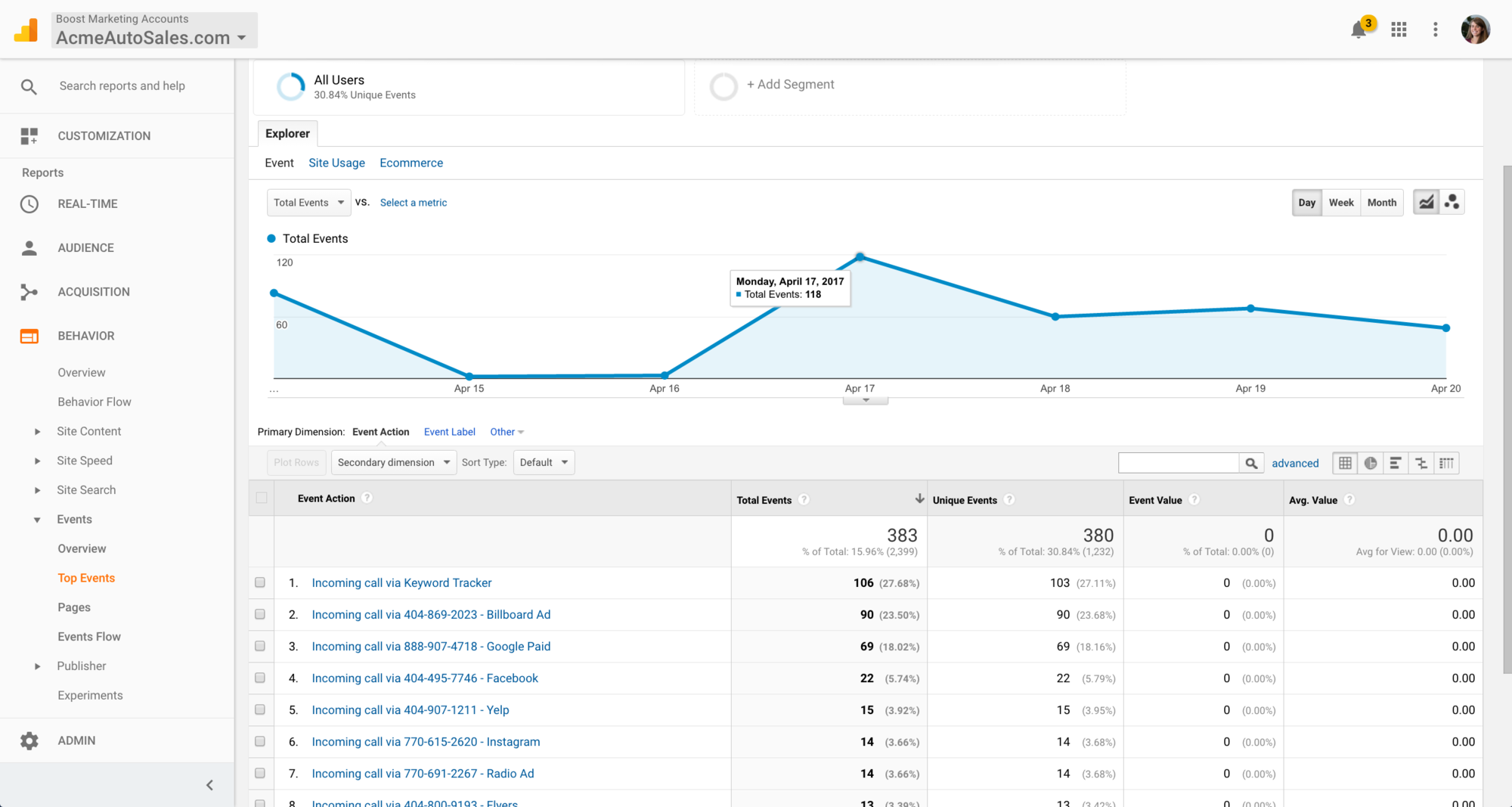The U.S. home services industry spans hundreds of professions including locksmiths, HVAC professionals, plumbers, electricians, building and construction professionals, and repairers. These contractors and specialists brought in an estimated $400 billion to $800 billion in revenue in 2016. As tech giants like Google and Amazon emerge as key players in this industry, it’s more important than ever for businesses to use the latest technology to stay competitive.
Here, we’ll cover some marketing best practices for businesses in the home services industry, and how call tracking can complement your overall strategy.
Improve Your Local SEO for Home Improvement Search
If you work in a home services profession such as plumbing or electrical repair, you probably rely on word of mouth and local SEO to drive the majority of new customers to your business. As Google/Ipsos reported, 97% of consumers use the Internet to research home services providers in their area before they make a purchase. This means that being listed first in local search results and Google Ads placements( formerly AdWords) are critical for making sure that your business is the first thing new customers see when they search for help in your professional field.
Ensure NAP Consistency for Your Contracting Business
When it comes to your search ranking results, one of the most crucial factors is NAP consistency (Name, Address and Phone). This means that your business’s contact information — its NAP — is consistent across your web channels. Without NAP consistency, search engines will be less “confident” in your business, which can result in polluted search results and lower rankings for your site. For home services businesses that rely heavily on local SEO, this means fewer prospects and sales.
You can quickly check your NAP consistency by Googling your business’s name and the city in which you’re located. If you see deviations in how your address or contact info is listed, then your NAP is not consistent. In that case, it’s time to head to each place where your business contact info is listed and ensure your name, phone number and address follow a uniform style. Make sure to check places like the Yellow Pages, Angie’s List, customer review sites and Home Advisor, to name a few.
Set Up a Call Tracking System
If you market to or communicate with your customers via phone, your business can benefit from call tracking. When combined with your other marketing and SEO efforts, call tracking helps paint a picture of how customers are finding your business.
Once your tracking system in place, you can monitor and qualify inbound phone calls. The number of ad campaigns you’re running will determine if it’s better to go with a single main-line tracking number, or whether you’ll need multiple phone numbers for multi-channel tracking.
If you’re a locksmith in a rural region who runs a single phone line for sales, one main-line tracking number is likely enough. But if you’re a bigger construction firm running multiple ad campaigns with many agents working your phones, then you’ll want to set up multiple tracking numbers.
Call tracking can also help your home service businesses identify ways to both improve the customer experience and cut costs. For example, outbound text messaging lets your customers confirm service appointments through direct SMS, which has a much higher rate of response than phone calls or emails. Recording calls through your call tracking system is also a great way to run quality assurance and training for your sales or customer service agents.
Route Important Calls to Your Strongest Agents
As important as it is to bring in new leads and customers, it’s equally important to make sure the right people are handling your sales calls, and that you’re playing to your team’s strengths. With agent-specific call routing, you can ensure that your best people are always handling calls from your biggest clients and prospects.
If you have a handful of agents who are strong closers, you can make sure that calls from undecided leads are always routed directly to them. And once a call is complete, you can view analytics on how individual team members are performing, measured against indicators like the call’s duration and their response times.
Use Dynamic Number Insertion
If your incoming calls are being driven by multiple ad channels, then Dynamic Number Insertion (DNI) is critical to managing your analytics and customer data.
By placing a snippet of Javascript on your site, visitors arriving at your landing page will see the correct tracking number for the ad channel that brought them. This allows you to properly track leads and customers based on the channel that inspired them to pick up the phone. You’ll also be able to cross-reference this activity against their search history, giving you a more complete picture of their journey.
The primary advantage here is simplicity: With DNI, you won’t need to keep track of multiple phone lines and their corresponding channels in your analytics system. But what if your phone number is displayed in the image of your ad, rather than in the text of your landing page? No worries, because you can dynamically swap in the image containing the correct tracking number.
Integrate into a Single Analytics Platform
Your analytics are always at their best when viewed alongside the relevant customer data stored in your CRM. If you’re just getting started with analytics, then Google Analytics is a great, free choice that’s widely used among businesses and agencies worldwide. Other popular choices include Salesforce, Kissmetrics and Hubspot, but these solutions require a purchase or subscription fee.
And if you’re already running ads online through Google Ads, you can sync your Ads data with your analytics platform to gain deeper insights into the keywords that drove site visitors and phone calls. By identifying how customers are searching for your home service, you can optimize your marketing to focus on the best-performing channels and devices.
Say you’re selling housing insulation, and you’re ready to make a follow-up sales call with a lead. You feel like they’re ready to convert, but you’re not quite sure how best to close the deal. After reviewing your analytics, you see that this lead made several Google searches for a specific kind of insulation, and has called you once before to express interest in a bulk deal to bring down the price. Armed with this knowledge, you’ve got the info you need to close on this lead and convert them into a customer.
Proving ROI
Now it’s time to start measuring your returns and seeing which ad channels are delivering the best returns. With the top-level view provided by synchronizing your call, web and marketing analytics, you can easily see which of your ad channels are delivering the most leads or customers and providing the best ROI.
For agencies, this is a surefire way to support your marketing efforts with hard data, which is sure to please your clients. And for businesses, this is one of the best ways to determine your most cost-effective channels without needing to spend extra on external consultants, saving you time and money.
Marketing your home services business can be daunting, but a good analytics and call tracking setup will make the journey that much easier. To learn more about how call tracking can help your business, request a free 14-day CallRail trial.







